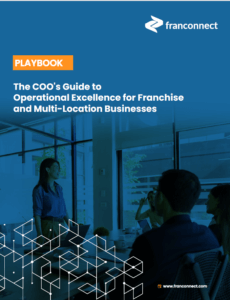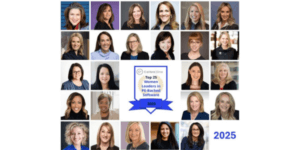What is a Buyer Persona?
A buyer persona is a representation of your ideal customer based on research and data from your existing customers. Creating robust, detailed buyer personas is a key component to any franchise marketing and sales strategy. It forces you to conduct comprehensive research about the types of franchisees that are successful for your organization, instead of going with gut feelings or what you simply believe to be true. Through your research, you’ll uncover a targeted approach to exactly how, where, and when you should be reaching out to your prospects. The more focused your efforts, the more qualified your leads will be, which means you’ll spend your dollars more wisely. Along with marketing efforts, your buyer personas will drive your sales approach, product development, franchisee engagement, training, and more.
How to Build a Franchisee Buyer Persona
So how do you actually go about building your buyer personas? Let’s break it down.
Step 1: Key Demographics
At the top of the funnel, your goal is to attract qualified leads – or qualified franchise candidates – to your franchise. Who are those qualified franchise candidates? What are their demographics? What are their goals? How do you reach them?
The answers to these questions may not be the same for every candidate. In fact, most organizations have 3-5 personas (sometimes more!) that represent a mix of existing and potential franchisees. The first step in the process of building your buyer personas is to figure out what buckets your franchisees fall into. Here are a few examples:
- Veterans
- Small business owner in your industry
- Millennials
- Retired athletes
What other types of franchisees have been successful with your company? Think carefully about these buckets, but be cautious not to get too specific. Keep them broad enough that each persona is clearly differentiated and fully fleshed out. You can always add – or remove – personas over time.
You may have a really good idea of how to group your franchisees, or you may be totally lost. Regardless, it’s important to take time to review data you already have, as well as interview candidates and current franchisees to create a comprehensive data set. Ask questions about demographics, careers, goals, challenges, where and how they find information, and what attracts them to this franchise opportunity. Get inside people’s heads and understand why and how they came about your organization and decided to become a franchisee – there’s nothing like hearing it straight from the source. Use this persona worksheet as a guide for your interviews.
Once you’ve collected your data, identify any trends in the demographics of customers or leads, learn how they search for and consume information, and figure out what their goals and challenges are. This will give you everything you need to ensure you are correctly bucketing your buyer personas.
Step 2: Give Your Personas Character
The next step is to fill out a detailed description of each persona. Fill out the questions in this franchisee buyer persona worksheet for each persona. Give your personas a name – often alliteration is used, such as Veteran Vinny or Millennial Molly, so it’s easy to remember. Add a photo to humanize the persona. Be as detailed as possible so anyone in your company who reads the persona really gets a sense of who this person is.
To further encourage you to get down into the nitty gritty details, let’s take a moment to understand why each section is important.
Demographics
Knowing the age, household income, and family status of your persona will give you a sense of what their day-to-day life is like. Marketing, selling, and developing a product or service for a 62-year-old man who is married with 3 adult kids and has a Ph.D. in computer engineering is very different from doing the same for a 18-year-old single female who is working as a cashier while taking classes at community college. One may be a viable candidate for your franchise and one may not.
Career
The past and present career(s) of your persona is one of the most important qualifiers for your leads. If your company is a mature brand, you have probably found that people with certain career paths tend to succeed in your franchise versus others. You may discover that candidates with no management experience are not going to do well, or candidates that are used to sitting behind a computer for eight hours per day won’t like the typical day of running a franchise unit.
Information Sources & Shopping Preferences
This is where you learn where to market to qualified leads. Wherever your personas are searching for information is where you should be. They aren’t just going to come to your franchise development website – lead them there by putting it right in front of their faces during an activity they already do. If your personas are active Facebook users, organic and paid Facebook campaigns may be a great tool for you. If they are members of the National Restaurant Association, then allocate your resources there.
Challenges, Goals, and What We Can Do
This is where you learn about your persona’s motivations. What keeps them up at night? What do they dream about? How can your company help them overcome their challenges and achieve their goals? This is going to help you understand what motivates your persona to reach out to you and why you need to be reaching out to this persona.
Real Quotes & Common Objections
Take quotes straight from the interviews you conducted during the research. When you share your personas internally, this is validation that your information is coming straight from the source.
Marketing Message
Form your marketing message. What is the voice and tone you use to talk to this persona? How do you describe your solution to this audience? Use all of the information you’ve written thus far to target your message.
After completing the worksheet for each persona, take it one step further and write their story. Putting it into paragraph format makes the persona come alive.
Veteran Vinny is a 45-year-old husband and father with a single-family home in the suburbs. After graduating from a four-year college, Veteran Vinny enlisted in the U.S. Army and spent most of his 20s and 30s, spending several years abroad. Now, as a military veteran, he is reacclimating to civilian life, focusing on his family and what kind of career to pursue.
At home, Veteran Vinny enjoys working in the yard and fixing things around the house; playing ball with his kids; watching his favorite sports teams; running; and being an active member of his church. At work, Veteran Vinny is an area manager for a large telecommunications company. He oversees six field technicians from his office at the area headquarters, though occasionally he conducts field visits during extremely busy times or for quality assurance. He often works nights and weekends due to lack of personnel.
Veteran Vinny is struggling with balancing work and life, and he is dispassionate about his job. He is finding that his skills and expertise are not translating as well as they could (and should!). He dreams of finding a job that gives him a sense of purpose and enables him to spend more quality time with his family, while providing them a comfortable lifestyle.
We believe franchising with our company can provide Veteran Vinny with the passion he wants and deserves for his career. We strongly believe in work-life balance, and we support our franchisees in their family lives.
Step 3: Don’t Create Your Personas in a Bubble
At this point, share the franchisee buyer personas with a few of your colleagues to see if anything stands out as incomplete or unclear. The goal is to make sure anyone who reads about each persona feels as if they know them and understand why this kind of person makes a good fit for your franchise. Remember that these are not static documents – you should add or remove personas as your franchise grows and evolves and as you learn about what success looks like in your franchisees.





 Ian Walsh
Ian Walsh








